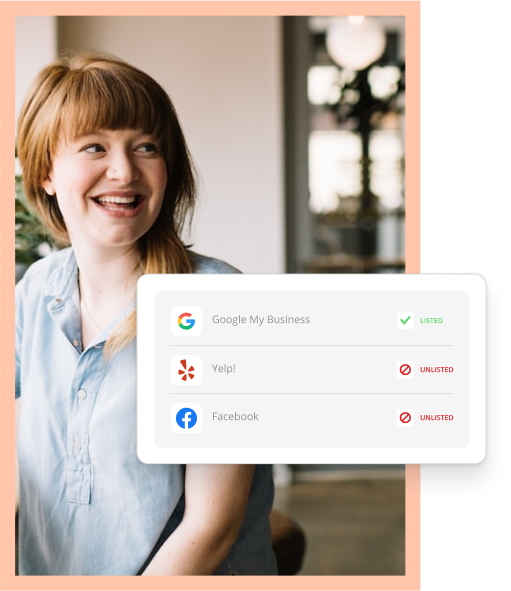What on Earth does the word “sticky” have to do with your business website?
If you’re like me, the only positive association I have with the word is with…ooey gooey marshmallows. Otherwise, what comes to mind are traumatic incidents with super glue and times I’ve stepped in gum (ugh!).
What is a sticky website? Why does having a sticky website matter? How can you make your website sticky?
Try not to get stuck on the weird terminology.

The Guide to Winning More Business Online
DownloadWhat is a sticky website?
Sticky sites deliver such positive user experiences and valuable content that visitors either:
- Stay on the site for extended periods of time, or
- Return to the site frequently.
Why does having a sticky website matter?
There are several reasons marketers spend hours trying to create sticky sites.
Sticky sites contribute to your search engine optimization (SEO).
Popular search engines like Google have algorithms that consider multiple aspects of your website and how users interact with it (called ranking signals) before they decide how relevant your site is to any given search. After weighing those factors, anything your website does well will improve your search rankings. On the flip side, anything it does not so well will hurt your rankings.
One of the most important things Google thinks your website should be doing is delivering a positive user experience. There are 3 core indicators of customer experience that search engines measure:
- Click through rate from the search results
- Time on site
- Fast or frequent bounces (when users click the Back button to return to more, better results)
Take a look at ranking factors 2 and 3 – time on site and bounce behavior. Having a sticky website is an easy way to improve those to measurements really quickly, in turn, beefing up your SEO.
Sticky sites encourage social sharing.
In 2016, Facebook rolled out a new recommendation tool that helps users discover new businesses based on their friends’ input. So more and more, consumers are straying from search engines for everyday recommendations and turning instead to their personal and professional networks online. They ask for advice where the majority of their friends and family are actively communicating with one another – on social media sites like Facebook.
So if your most loyal customers want to recommend you to one another, having a website they know and love will make it really easy to share via social. Sticky sites help you get noticed on social media and gain traction and followers.
Sticky sites fuel conversation and generate leads.
If your newly sticky website is increasing both the amount of time spent on your site and the frequency of visits, it’s because consumers are benefiting from interacting with it. That means they’re more likely to interact with you and subsequently – your business.
With increased traffic to your site comes increased responsibility on your part to convert that traffic into conversations and leads.
Here’s how to turn a sticky site into sales.
How to Make Your Website Sticky
Still wondering, “What is a sticky website?” Here are some fast, easy ways to emulate sticky sites.
Give it a sleek, branded look.
Sticky sites look professional and give a positive impression of your brand’s credibility. So when it comes to making a first impression online with consumers and search engines, your site needs to look the part.
Here are our top business website design trends to avoid.
Make navigating your site super simple.
It may feel tempting to add everything you can possibly think of to your business website in a shotgun approach to getting the word out there. Resist the urge! Information overload will do nothing but scare away potential customers, as they won’t want to decide for you what’s the most pertinent information on your site.
The best thing you can do is design your business website such that its clear where you want consumers to read, click and convert. Opt for a single navigation pane, 1 or 2 clear calls to action (max) and a single-column layout on your home page.
Update: The latest trend is responsive and sticky navigation bars. Since so many website visitors are viewing your site from a mobile device, you need to make it easy to navigate your site from tiny screens with fat fingers. Many mobile sites reduce the navigation bars so severely that it’s hard to get past one or two pages from a smartphone. Instead, optimize the mobile version of your website so the navigation remains accessible, no matter what page consumers are visiting. You can do this by replacing long names of pages with icons, for example.
Be different and exciting.
Simple doesn’t have to mean boring. Without cluttering things up, insert your brand’s personality into your website wherever you can. You can do this with the words you use as well as the images you choose.
Instead of using the same stock photos your competitors use, for example, take your own images! Show your business in action and your team smiling doing what they do.
Make them an offer they can’t refuse.
Sometimes you’ve got to give a little to get a little. Don’t be afraid to offer something in exchange for generating a lead on your website (thus improving its stickiness).
Top sticky website offers:
- A free trial or free introductory service
- A discount of some sort, in dollar amount or by percentage off
- BOGO – buy one, get one
- An option to book now
- Subscription to your email marketing and exclusive promotions
Thryv helps business owners like you implement these offers, by the way. Find out how.





